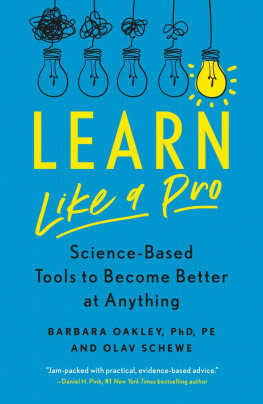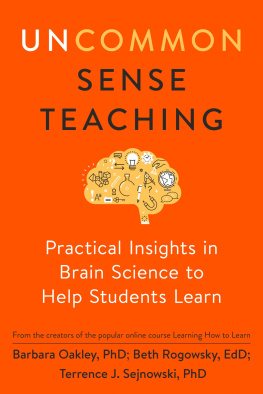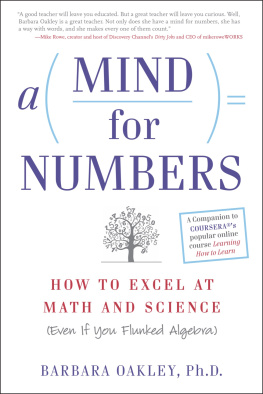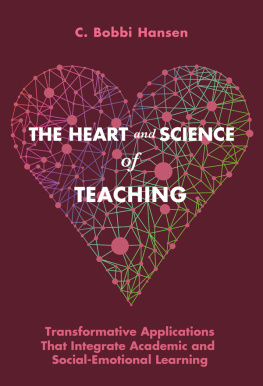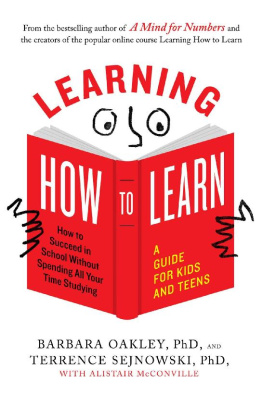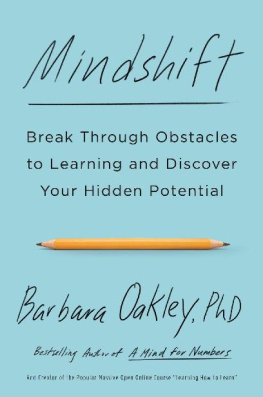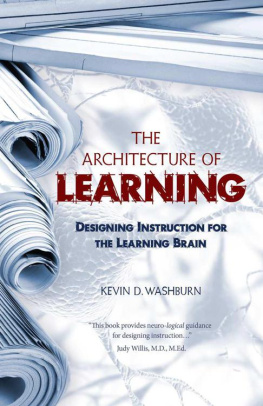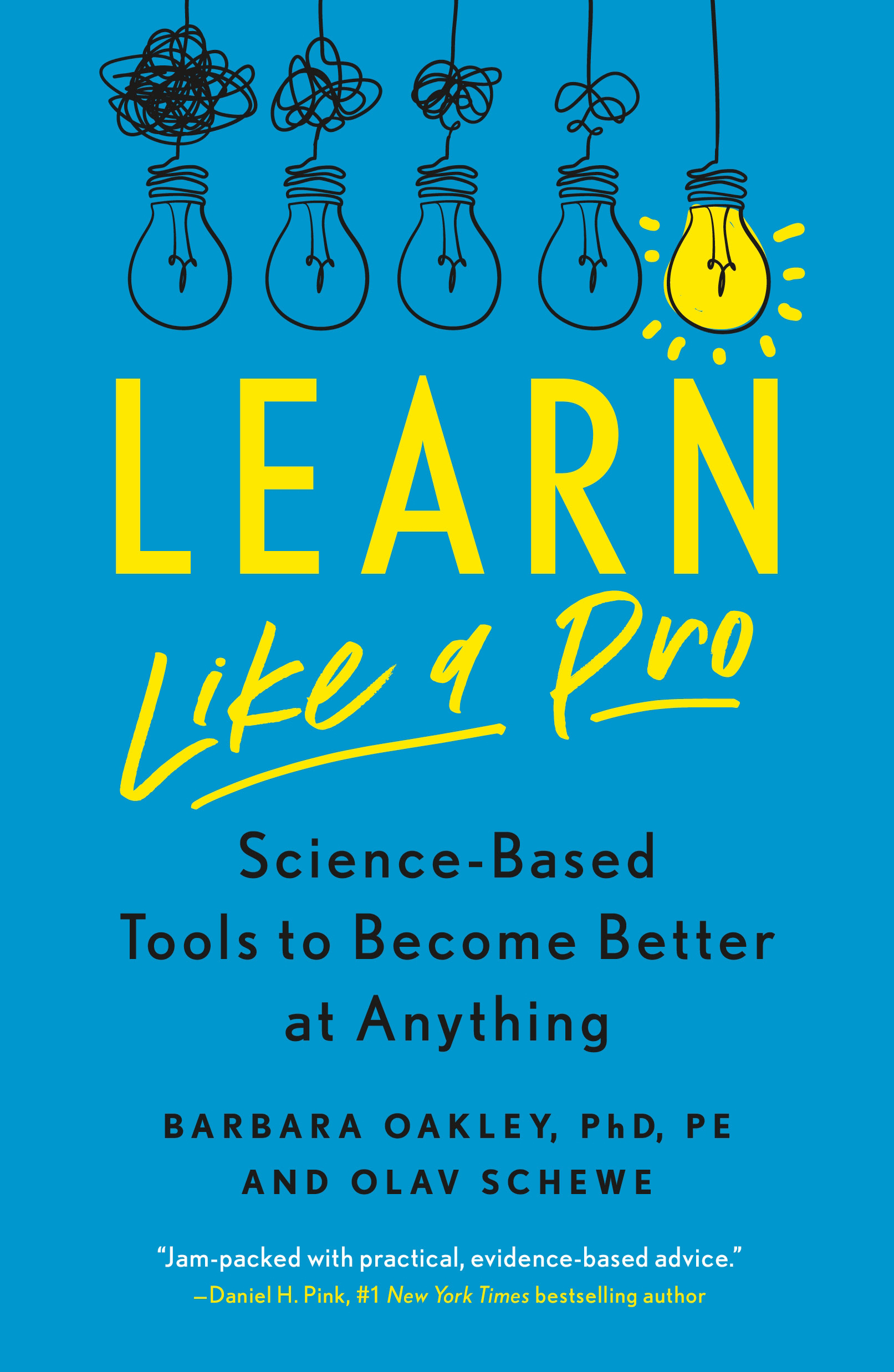Contents
Guide
Pagebreaks of the print version
The author and publisher have provided this e-book to you for your personal use only. You may not make this e-book publicly available in any way. Copyright infringement is against the law. If you believe the copy of this e-book you are reading infringes on the authors copyright, please notify the publisher at: us.macmillanusa.com/piracy.
Do you spend too much time learning with disappointing results? Do you find it difficult to remember what you read? Do you put off studying because its boring and youre easily distracted?
This book is for you.
Were Olav Schewe and Barb Oakley, and both of us have struggled in the past with our learning. But we have found techniques to help us master materialany material. Building on insights from neuroscience and cognitive psychology, we will give you a crash course to improve your ability to learn, whether youre studying math, language, coding, karate, cooking, or anything else. Youll see why the strategies work because youll see whats happening in the brain when you use them. No, this isnt a little book of miracles. But you will find that reducing frustration and improving your study success may sometimes feel miraculous.
In Olavs case, he always wanted to get good grades, but he couldnt, no matter how hard he studied. He almost gave up on his dreams, thinking he wasnt smart enough. But then he discovered that the key to better grades wasnt his own innate abilities, or the number of hours he put ininstead, it was how he studied. After he took a step back in his teens and made some adjustments in his learning techniques, he began to excel.
In the end, Olav, the former slow student with average grades, became the top student in his high school class. He went on to get a masters with distinction in business administration from the University of Oxford. And his book on how to study effectively, Super Student, became an international best sellertranslated into more than a dozen different languages.
As for Barb, she flunked math and science all the way through high school. She was convinced she didnt have the math gene. In her later twenties, however, she decided to start all over again with math, beginning with remedial high school algebra. Slowly, she improved in math and science. By applying powerful study methods learned during her language study at the United States Defense Language Institute, she succeeded. Shes now a professor of engineeringshe also teaches millions of students around the world in online courses such as Learn like a Pro and Learning How to Learn, which is one of the worlds largest massive open online courses. This goes to show that even when you believe youre genetically incapable of succeeding at a subject, that doesnt need to be true at all.
You might think, I am terrible with numbers, or I cant learn languages, or I cant speak in front of crowds, when the reality is that you simply havent learned how to do those thingsyet. Instead, if you change your focus to finding techniques and methods for learning, youll find that this little book puts marvelous insights at your fingertips. Youll find new solutions, often based on recent neuroscientific findings, that will allow you to move mental mountains and do what you never thought you could do.
Through their decades of writing, teaching, and research on learning, Olav and Barb have developed deep connections with experts from a vast array of disciplines. What youll find in this little book are the very best of practical learning tools and insights synthesized from research in neuroscience, cognitive psychology, education, and many other fields. And its all honed with feedback from hundreds of pro learners, many of whom themselves have gone through the trenches of learning difficult concepts and skills. Pro learners gradually add tools and techniques to their mental toolbox, and discover how to think more critically about their learning. That allows these learners to make the best use of their brains, whether those brains seem naturally geared toward learning or not.
This book will help you join the pro learning club. Welcome aboard!
Youre reading this book because, no matter what youre trying to learn, you want to make sure every minute of your studies counts. So let us start by giving you one of the simplest, most powerful mental tools in the world of study: the Pomodoro Technique. This clever method will definitely help boost your concentrationwe know this from research. Even if you already know the Pomodoro, youll discover modern twists that can make the Pomodoro even more powerful. And theres much more in the chapters ahead that will be new to you!
The Pomodoro Technique
Use this approach to structure your study sessions:
- Sit down where youll be studying or working and remove any possible distractors. This means ensuring there are no pop-ups or extraneous open tabs on your computer, dings from your cell phone, or anything else that could draw you off-task.
- Set a timer for 25 minutes. You can use a mechanical or silent digital timer. You can also use the timer or an app on your phone. If you use your phone, place it out of sight and beyond arms reach so you wont be distracted while focusing.
- Dive in and study or work as intently as you can for those 25 minutes. If your mind wanders (as it inevitably will), just bring your attention back to the task at hand. Most things can wait or be postponed for 25 minutes. If distracting thoughts come up that you feel like you should act on, write them down in a to-do list so you can tackle them after the Pomodoro session is over.
- Reward yourself for about 5 minutes at the end of the Pomodoro session. Listen to your favorite song, close your eyes and relax, go for a walk, make a cup of tea, cuddle with your dog or catanything to let your mind comfortably flow free. Its also best to avoid checking your cell phone or email during this break timemore on why later.
- Repeat as appropriate. If you want to study for 2 hours, you can do four Pomodoros with the break lasting roughly 5 minutes each time. If you have trouble getting yourself back to work when the break is done, set a timer for the break as well.
POPULAR POMODORO APPS
- focus booster (PC)
- PomoDone
- Forest
- Toggl
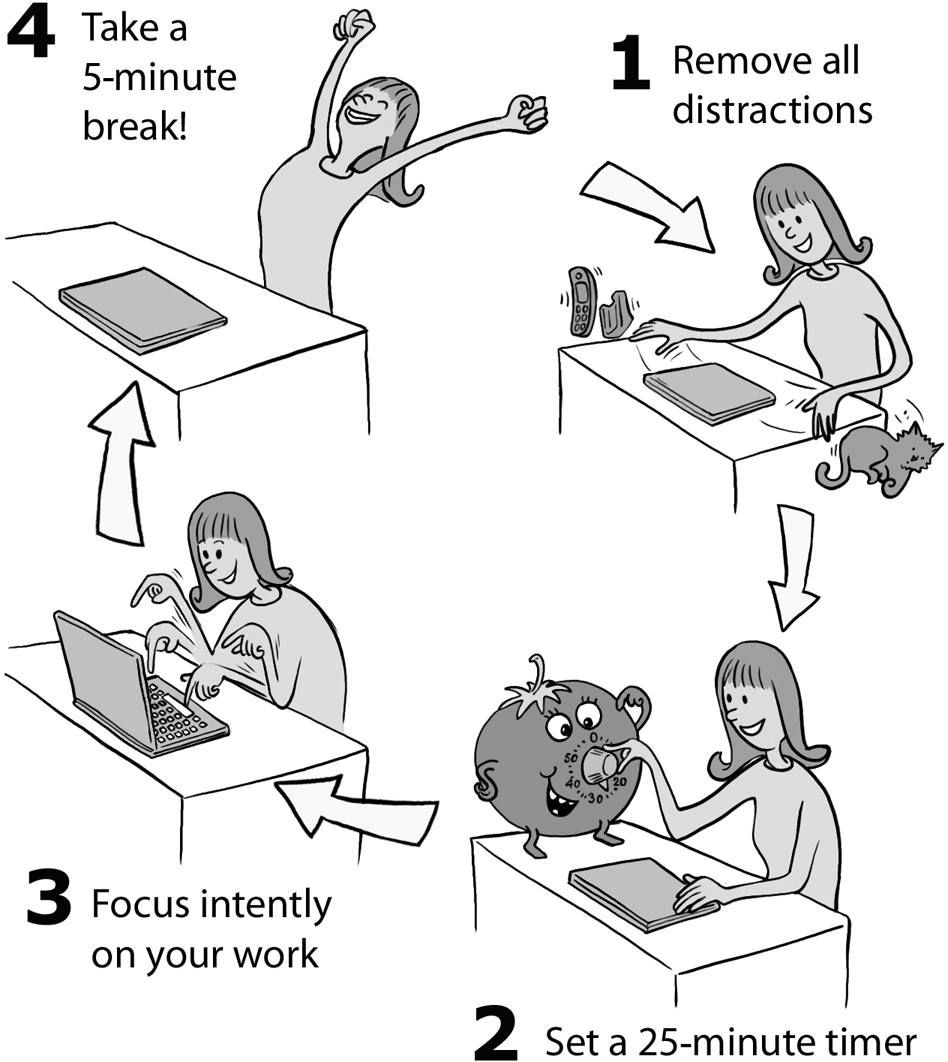
The Pomodoro Technique in four easy steps.
Sounds easy, doesnt it? It is easy. Sometimes your mind may struggle while doing a Pomodoro, but the reality is almost anyone can keep their focus for 25 minutes.
Why the Pomodoro Technique Works
You might wonder how something so simple can be so powerful. The reason is that the Pomodoro Technique captures important aspects of how your brain learns.
- Pomodoro-fueled bursts of focused attention give your brain practice in focusing without disruption, which is much needed in todays distraction-ridden mobile phone world.
- Short mental breaks where you get away from focusing are ideal to allow you to transfer what youve just learned into long-term memory, clearing your mind for new learning. You cant feel this process taking place, which is why you might tend to skip itbut


